Product pictures
| Amount Per 1 cup | |||
| Calories | 330 Kcal (1382 kJ) | ||
| Calories from fat | 153.9 Kcal | ||
| % Daily Value* | |||
| Total Fat | 17.1g | 26% | |
|---|---|---|---|
| Saturated Fat | 5.1g | 26% | |
| Cholesterol | 35mg | 12% | |
| Sodium | 850mg | 35% | |
| Total Carbs | 29.1g | 10% | |
| Sugars | 3.1g | 12% | |
| Dietary Fiber | 1g | 4% | |
| Protein | 15.1g | 30% | |
| Vitamin C | 3mg | 5% | |
| Vitamin A | 0.8mg | 26% | |
| Iron | 1.5mg | 8% | |
| Calcium | 60mg | 6% | |
* Percent Daily Values are based on a 2000 calorie diet. Your daily values may be higher or lower depending on your calorie needs.
Find out how many calories should you eat.
Ingredients And Nutrition Overview
Best
choice Good
choice Poor
choice Avoid
it!
choice Good
choice Poor
choice Avoid
it!
-
WeightWatchers Points: 7.8, PointsPlus: 9, SmartPoints: 10
WeightWatchers Points are estimated by carbohydrates, fats, protein and fiber in product. They are not an affirmation of better quality or nutritional value of the product or its manufacturer. Only way to count for dieters. Less points are better.
Read more at Weight watchers diet review -
Contains trans-fats! Even if label says 0!
Consumption of food containing trans-fat has unequivocally been shown to increase the risk of heart disease by raising levels of LDL (bad cholesterol), and lowering levels of HDL (good cholesterol). Why do the nutrition labels on some products say that there are no trans fats, while Fooducate insists there are? Unfortunately there is an FDA loop hole here. If the amount of trans-fat in a product is less than half a gram per serving, manufacturers can round it down to 0. But even 0.49 grams of trans-fat is bad for you. And don't even get us started on the actual consumption versus the tiny serving size. So how do you know if a product does have trans fat in it? Look for "partially hydrogenated" oils and fats in the ingredient list. Sources: ----------- Mensink RPM, Katan MB. Effect of dietary trans fatty acids on high-density and low-density lipoprotein cholesterol levels in healthy subjects. N Engl J Med 1990;323:439-45. Zock PL, Katan MB. Hydrogenation alternatives: effects of trans fatty acids and stearic acid versus linoleic acid on serum lipids and lipoproteins in humans. J Lipid Res l992;33:399-4l0. Judd JT, Clevidence BA, Muesing RA, Wittes J, Sunkin ME, Podczasy JJ. Dietary trans fatty acids: effects of plasma lipids and lipoproteins of healthy men and women. Am J Clin Nutr 1994;59:861-8. Lichtenstein AH, Ausman LM, Jalbert SM, Schaefer EJ. Effects of different forms of dietary hydrogenated fats on serum lipoprotein cholesterol levels. N Engl J Med 1999;340:1933–1940 Hu FB, Stampfer MJ, Manson JE, Rimm E, Colditz GA, Rosner BA, et al. Dietary fat intake and the risk of coronary heart disease in women. N Engl J Med. 1997;337:1491–9. Mozaffarian D, Katan MB, Ascherio A, Stampfer MJ, Willett WC. Trans fatty acids and cardiovascular disease. N Engl J Med. 2006;354:1601–1613.
-
Contains sodium benzoate / benzoic acid
Sodium benzoate / benzoic acid are used to prevent the growth of microorganisms in acidic foods. They are natural substances. However, in beverages with ascorbic acid (vitamin C), a chemical reaction creates small amount of benzene, a carcinogen. ----------- Sources: 1. Gardner LK, Lawrence GD. Benzene production from decarboxylation of benzoic acid in the presence of ascorbic acid and a transition-metal catalyst. Journal of Agricultural and Food Chemistry 1993;41(5):693–695 2. Bonaccorsi G, Perico A, Bavazzano P, et al. Benzene in soft drinks: a study in Florence (Italy). Igiene e sanita pubblica 2012;68(4):523-32. 3. Li L, Li H, Zhang X, Wang L, Xu L, Wang X, Yu Y, Zhang Y, Cao G. Pollution characteristics and health risk assessment of benzene homologues in ambient air in the northeastern urban area of Beijing, China. Journal of Environmental Sciences 2014;26(1):214-23. · Focuses on benzene in the air vs. food. However, supports cancer risk from benzene exposure 4. Huff J. Benzene-induced cancers: abridged history and occupational health impact. International Journal of Occupational and Environmental Health 2007;13(2):213-21. 5. Smith, MT. Advances in understanding benzene health effects and susceptibility. Annual Review of Public Health 2010;31:133-48 6. Nyman PJ, Diachenko GW, Perfetti GA, McNeal TP, Hiatt MH, Morehouse KM. Survey results of benzene in soft drinks and other beverages by headspace gas chromatography/mass spectrometry. Journal of Agricultural and Food Chemistry. 2008;56(2):571-6.
-
More than 20% of daily saturated fat
Not all fats are created equal. Saturated fats are the ones responsible for bad cholestrol buildup in our blood vessels, as well as contributing to coronary disease.
-
Contains MSG!
Monosodium Glutamate is responsible for the umami (savory) flavor of foods, but some people steer away from it as it causes them adverse reactions.
-
For dieters: FoodPoints value is 9
* FoodPoints are calculated by Fooducate based on fats, carbs, fiber, and protein. They are not an endorsement or approval of the product or its manufacturer. The fewer points - the better.
-
Puffed up with protein?
Protein is important, but some of the protein you find in this product isn't exactly natural. The protein comes from one of the following sources: - milk protein concentrate - whey protein isolate - soy protein isolate While it's fine to get some of your protein from supplemented items, keep in mind that they are not "natural" sources and that it's not ideal to get protein only from processed goods. If you're looking for more protein, try beans, quinoa, nuts, seeds, peas and spinach & leafy greens. Not only do they have protein, they're filled with other vitamins and minerals.
-
Highly Processed!
This product is highly processed. If you'll take a look at its ingredient list, you'll discover new words to add to your vocabulary. Many of theses ingredients are required to increase the shelf life of the product and improve the flavor that disappears when food is not fresh.
-
Contains MSG-like ingredients
People sensitive to MSG may also be sensitive to MSG-like substances. These are glutamates or chemically similar items added to improve a product's taste. Here is a short list of common MSG-like substances (see our blog for more): - Yeast extract - Autolyzed yeast - Hydrolyzed proteins ---- Source: Scopp AL. MSG and hydrolyzed vegetable protein induced headache: review and case studies. Headache. 1991;31(2):107-10. Questions and Answers on Monosodium glutamate (MSG) http://www.fda.gov/food/ingredientspackaginglabeling/foodadditivesingredients/ucm328728.htm Natural Flavorings on Meat and Poultry Labels http://www.fsis.usda.gov/wps/portal/fsis/topics/food-safety-education/get-answers/food-safety-fact-sheets/food-labeling/natural-flavorings-on-meat-and-poultry-labels
-
No whole grains here
Whole grains are a great source of fiber and other nutrients. Fiber is one of the most important nutrients lacking in the modern American diet. Unfortunately, this product does not contain enough whole grains, if any. If there is fiber in here, it's probably added fiber and not naturally occurring. Whole grains are not the only way to consuming fiber, BUT by choosing them instead of processed grains you've made a smart choice. If you'd like to eat a bit better, try for something that contains whole grains.
-
Naturally high in Vitamin A
The vitamin A in this product comes from real food, not as a fortified ingredient. This is important because it means you are getting hundreds of additional nutrients from the real food.
-
Contains glycerides
Mono and diglycerides are commonly used in processed foods to maintain stability in liquid products and "improve" quality in baked goods. These glycerides could be created using both hydrogenated and partially hydrogenated oils or animal fats. In theory, this may transfer a small amount of trans fats into the product. The glycerides are synthesized into phosphates by reacting with phosphorus pentoxide, a potential environmental hazard. But that's only part of the problem . . . The presence of mono and diglycerides should discourage you from buying a product for more than just these reasons: their inclusion in a product indicates that it is industrially processed. Choose products without mono and diglycerides not only for health reasons, but because you are getting a better quality food item overall.
-
Watch the cholesterol...
While cholesterol has been shown to be less harmful than once believed, you should not consume more than 300mg a day. This product contains more than 10% of your daily cholesterol intake. If you're on a low cholesterol diet, make sure you pay attention to portion: 10% of your daily allowance can quickly become 50% when a hamburger turns into double cheeseburger. Trouble sticking to daily goals? Try limiting your meat, cheese and dairy intake to one item per meal and avoid items with multiple sources of cholesterol (like chicken with ham and cheese, breakfast sandwiches with sausage and cheese or bacon cheeseburgers). Opt for items like BLT's, chicken sandwiches with veggies and meatless pizza. Choose water and not milk for your main mealtime beverage.
-
Learn about Maltodextrin, found here
Maltodextrin is a polysaccharide that is used as a food additive. A polysaccharide is a type of carbohydrate. It is produced from starches of corn, wheat, potatoes or rice. Its flavor can be slightly sweet or almost flavorless. Maltodextrin is used as a bulking base for artificial sweeteners, for example in Jell-o it is used in conjunction with Aspartame and Acesulfame Potassium. It is also the bulking agent in Splenda.
You Might Also Like
% RDI of Main Nutrition Facts
17%
of RDI* (330 calories) 255.3 g
-
Cal: 16.5 %
-
Fat: 26.3 %
-
Carb: 9.7 %
-
Prot: 30.2 %
-
0%25%75%RDI norm*
Calories Breakdown
- Carbs (35.3%)
- Fat (46.5%)
- Protein (18.2%)
Get Your Recipe of Health!
Follow RecipeOfHealth on Facebook!


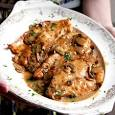
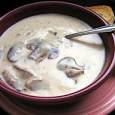

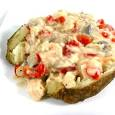
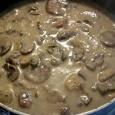
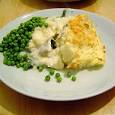
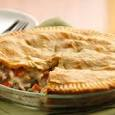

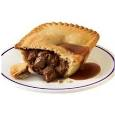
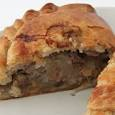
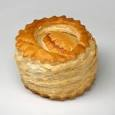
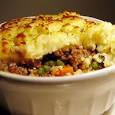

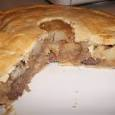
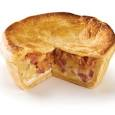
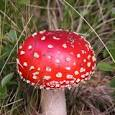
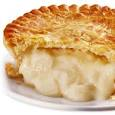













Add your comment